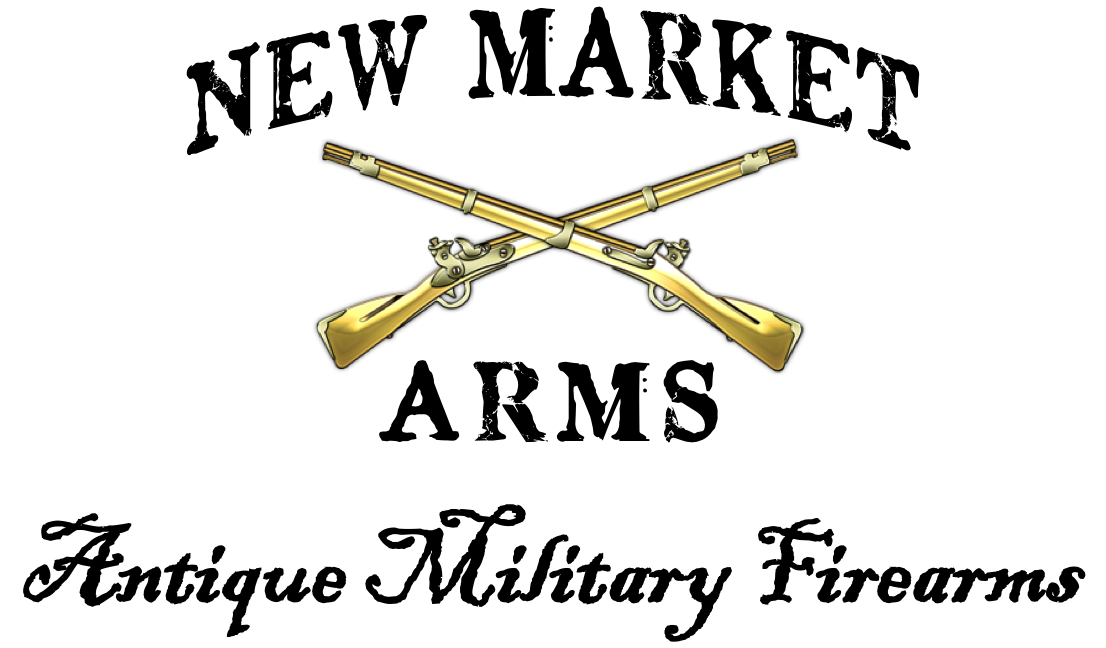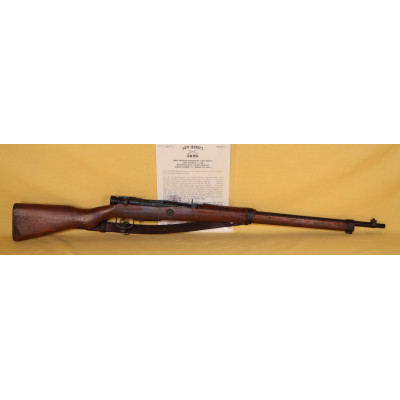WWII Japanese Type 99 "Last Ditch" Rifle, Nagoya Arsenal, c. 1945
This is late WWII Japanese Substitute Type 99 Rifle, also known as the “Last Ditch” rifle in very good original condition.
This rifle was manufactured at the Imperial Military Nagoya Arsenal, known simply as the Nagoya Arsenal, which was located in the Aichi Prefecture, in the 11th Series and is serial number 46624. The Nagoya Arsenal was established in 1923 by the Japanese Government and, by the time this rifle was manufactured in late 1944, consisted of eight primary and seven branch facilities located in several cities in and around south-central Honshu. Rifle production was concentrated in Chigusa at the Konsha Koho factory, at the Torrimatsu factory in Kasugai, at the Inatsu branch factory in Gifu-ken, and at the Atsuta factory in Nagoya. Production of the Type 99 Rifle, of which this is an example, began in August 1939 at Nagoya. The Nagoya Arsenal was also responsible for prototype fabrication as well as production of the various models of paratrooper rifles, and the Type 99 Sniper Rifle, all of which were based on the Type 99 Rifle design.
Nagoya manufactured Type 99 Rifles followed the general pattern of the Type 99 as designed, including full length forend, wire monopod, adjustable rear sight, and a nice fit and finish. With arms production severely hampered by US bombing in 1944, the Japanese approved the production of the Substitute Type 99 beginning in the 7th Series at Nagoya, which occurred in early 1944. Full production of the Substitute Type 99 began in the fall of 1944 with the 8th Series, which incorporated most of the production shortcuts that came to be associated with Last Ditch Japanese Rifles. Some of the changes, which were incrementally adopted over the series, include: use of stamped and welded rear bands, use of simple peep sight, use of simplified single- and two-screw rear sling swivels, and generally poor fit and finish of all components.
As noted, this particular rifle is in the 11th Series, which began production in late 1944 and continued into the first calendar quarter of 1945. Some of the changes seen in the 11th Series were the elimination of the earlier type of receiver with the dust cover grooves, simplified firing pin milling cuts, and eventual elimination of the rear sling swivel entirely. Some of the carryover changes from earlier series found on the 11th Series include the front sight without protective wings, the cylindrical bolt handle, elimination of the cleaning rod, and the wooden butt plate.
The Receiver on this rifle is the earlier, but correct, Type A Receiver with the dust cover grooves, and it is in fine condition with the vast majority of its original blue finish present. The finish loss on the receiver is where the Chrysanthemum was ground off. The “Type 99” Kanji remains crisply stamped. The left side of the receiver has the Kana symbol of the 11th Series followed by the serial number “43324,” followed by the Nagoya Arsenal symbol, followed by an inspection Kanji, all of which are still crisp. There is also a witness mark on the left, front of the receiver that aligns perfectly with a witness mark on the left, rear of the barrel.
The Barrel on this rifle is the standard 25 ½” length and the exterior surface is in very fine condition with the majority of the original bluing present. The external surface is very roughly finished, with is characteristic of late war, last ditch Type 99 Rifles. The bore is in very fine condition with strong rifling, and it maintains a shiny appearance with most of the original chrome plating present and with minor areas of loss along its length. The original front sight is present, and it correctly does not have the protective wings. The front sight blade remains tightly dovetailed into the front sight base. The front sight assembly retains the majority of its original blue finish with only minor corrosion staining on the blade.
The Rear Sight is the original and correct solid block with simple aperture. The block remains tightly fitted to the barrel with its original single-slot screw. The screw has an unmarred slot, and it is staked in place. The Rear Sight retains virtually all of its original blue finish.
The Bolt is the correct late war type with the barrel-shaped bolt handle. The bottom of the bolt handle root has the last three matching numbers “624” stamp. The bolt retains 95% of its original blued finish. The bolt face also retains virtually all of its original blued finish. This Striker has the late war cut outs as seen in Last Ditch rifles from Nagoya. The Striker Lug has a Kanji inspection stamp on its side. The barrel of the Striker has the matching serial number “624” stamp. The striker retains 95% plus of the original blue finish. The Extractor is in very good condition and retains considerable original blue finish with mottled wear on the outer surface. The outer surface of the Extractor has the matching partial serial number “624” stamp. The Bolt Safety is the correct late war type with rough finished face, and it retains virtually all of its original blued finish. The nose of the safety has the matching partial serial number “624” stamp.
The Front Barrel Band on this rifle is in fine condition and retains 95% of its original blued finish. The band is the late war, rough finished type with integral bayonet lug. There is, correctly, no cleaning rod as that was considered an unnecessary luxury by that point in the war.
The Rear Barrel Band is in fine condition and is the correct and late war, roughly finished type with single slot screw and sling swivel. The band and swivel retain the majority of its original blued finish that now exhibits a dark plum patina.
The Trigger Guard Plate retains the majority of its original, rough machined blue finish that now exhibits a smooth plum patina. The front Guard Plate Screw is in good condition and is staked in place. The two rear Guard Plate Screws are present, have unmarred slots, and are staked in place. The Trigger Bow generally exhibits a mixed plum and pewter patina rough casting marks. The Trigger itself retains most of its original blue finish that now exhibits a mixed plum and pewter patina. The Floor Plate also exhibits the original rough casting marks. The Floor Plate Release is roughly milled but works correctly. The Follower Spring retains almost all of its original tempered blue finish. The Follower is the late war stamped and spot-welded type, and it retains the majority of its original finish on the bottom with minor cartridge wear on the top surface.
The Rear Stock Swivel Assembly is the correct late-war single screw type that exhibits a plum patina, and the single-slot screw is unmarred. The swivel and plate retain the majority of its original blued finish. The Butt Plate is wood and is secured to the stock with three nails. The butt plate remains solidly attached to the stock.
The original two-piece stock is in fine condition with its original wartime finish. The seam between the two pieces is still very tight. There are two Kanji inspection stamps on the bottom of the butt, just to the rear of the stock wrist. The stock has normal dings and scratches, but no cracks or chips are noted. The short, late-war Handguard also retains its original finish and has similar dings and scratches from handling and use. The finish on the handguard and stock match perfectly. The original single stock reinforcing bolt and end plates are present and both end plates retain the majority of their original blued finish.
The Rifle has its original Type 99 Short Rifle Leather Sling. The Sling exhibits some crazing but is still completely intact and supple along most of its length. The front stud is present, it retains all of its original blued finish, and the slot in the leather is not torn. The original brass metal buckle is present, and the original leather keeper is also present and retains all of its original stitching.
This rifle functions perfectly.
- Item #: Jap T. 99 # 46624
- Availability: In Stock
-
$1,145.00
















































































































